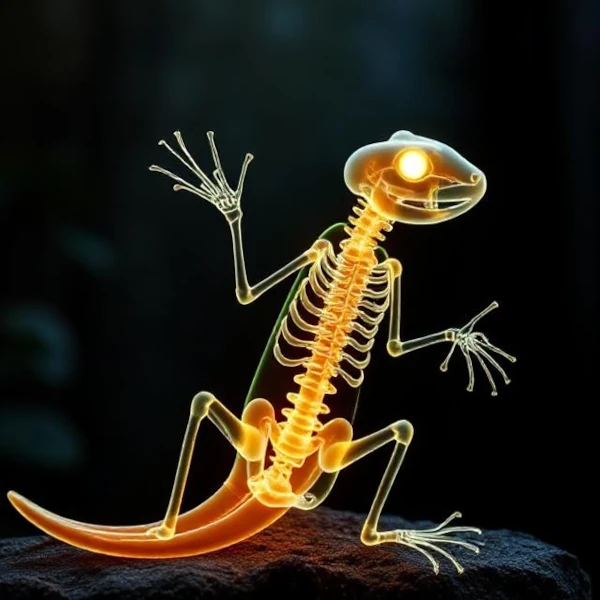
Regeneration in animals refers to the ability of certain organisms to restore one or more amputated organs or limbs. This complex biological phenomenon relies on finely regulated cellular and molecular processes, integrating biochemical and mechanical interactions. From a physical perspective, regeneration involves a dynamic orchestration of electrical, chemical, and mechanical signals that reactivate embryonic development programs.
Immediately after amputation, a local inflammatory reaction occurs, followed by the formation of a blastema: a mass of undifferentiated cells with high proliferative capacity. These cells often come from the dedifferentiation of adjacent mature cells, a process that resets their epigenetic state. Physically, this step involves the modulation of the cell membrane potential and the generation of a bioelectric electrical gradient between the injured tissue and healthy tissues, crucial for the direction and growth of cells.
Signaling via growth factors (FGF, Wnt, BMP, Notch) triggers intracellular cascades that regulate gene expression. At the same time, mechanical constraints exerted on the tissue by the extracellular microenvironment guide the migration and organization of blastema cells. The remodeling of the extracellular matrix, associated with local variations in tissue rigidity, is a key physical parameter controlling the morphogenesis of the new structure.
Under the influence of biochemical and mechanical signals, blastema cells proliferate and then differentiate into specific cell types (muscles, bones, nerves, skin). This step relies on fine synchronization of cell cycles and the ability of cells to interpret mechanical signals via mechanoreceptors such as integrins. The interaction between mechanical forces and chemical signaling can be modeled using continuum mechanics and the biophysics of cell membranes.
Some animals, such as salamanders or echinoderms (starfish, sea urchins, etc.), exhibit remarkable regeneration abilities, while mammals have limited abilities often reduced to healing.
| Species / Group | Regeneration Capability | Cellular Mechanisms | Role of Electrical Signals |
|---|---|---|---|
| Salamander (Ambystoma sp.) | Complete regrowth of limbs, tail, eyes | Blastema formed by cellular dedifferentiation | Bioelectric electrical gradient guides blastema formation |
| Axolotl (Ambystoma mexicanum) | Complete regeneration including internal organs | Progenitor cells activated by growth factors | Membrane electrical potential modulated during regeneration |
| Echinoderms (starfish, sea urchins) | Regrowth of arms, regeneration of nervous tissues | Proliferation of stem cells | Electrical oscillations associated with growth |
| Planarians (flatworms) | Near-total regeneration of the entire body | Abundant population of pluripotent stem cells (neoblasts) | Bioelectric potentials modulating body polarity |
| Crustaceans (e.g., crabs) | Regrowth of amputated claws and legs | Local activation of progenitor cells in the epidermis | Less studied but present electrical signaling |
| Fish (e.g., zebrafish) | Regeneration of fins, part of the heart | Activation of progenitor cells and cellular dedifferentiation | Electrical potentials influencing cell proliferation |
| Mammals (e.g., mice) | Limited repair, healing rather than regeneration | Activation of progenitor cells but low plasticity | Weak electrical signals, little involvement |